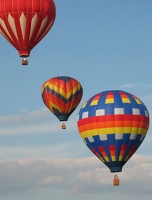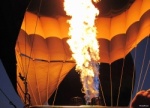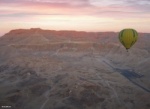Perimeter, Area and Volume Content Module
BACK TO Content Modules
Contents |
Plot the Course
The rationale
Whether you need to build a fence around your yard or are shipping a package to family or friends far away, people use the principles of perimeter, area, and volume everyday to accomplish these tasks. The ability to use measurement is personally relevant to all students, including those with disabilities, because understanding of measurement helps people communicate their ideas of size to others. The mathematical strand of measurement allows for a variety of hands-on activities that include manipulatives. This hands-on approach is often highly beneficial for students who may require concrete application of concepts such as area, surface area, and volume in order to support academic achievement.
Module Goal
The goal of this module is to provide detailed instructions on the more difficult concepts of perimeter, area, surface area, and volume to teachers of students with disabilities at the elementary, middle, and high school level. This module promotes a mathematical understanding of these concepts so that a teacher can begin to plan how to teach the concepts to students. Additionally, this module will provide instructors with potential adaptations and modifications to consider when designing materials and instruction for students with severe disabilities.
Module Objectives
After viewing the content module, teachers will:
- Apply various strategies to determine perimeter, area, surface area, and volume of two and three dimensional shapes
- Apply formulas to determine perimeter, area, surface area, and volume of various polygons and shapes
- Solve word problems pertaining to area, surface area, and volume of various two and three dimensional shapes
Time for Take Off
Understanding the vocabulary used within perimeter, area, and volume is important for both teachers and students in planning and implementing math lessons. As a teacher, knowing and using the mathematical terms not only ensures your instruction stays true to the math content, but also will help with collaborating with other math teachers or content experts. When choosing which vocabulary to teach, it is most important that the teacher selects the most salient, important, or most frequently used vocabulary for each lesson. Below you will find a list of vocabulary included within this module. It may or may not be necessary to provide instruction for all terms as students may have learned them previously. If you are a secondary teacher and are not confident your students have been taught the elementary vocabulary terms, you may want to add those unknown terms to the focus and review of your lesson plan. While providing vocabulary instruction, you may consider including pictures or objects to make the instruction more concrete for students with disabilities (See ideas to support vocabulary learning below).
Elementary School
- Perimeter - the area around a polygon
- Area - the amount of space inside a two-dimensional shape or object
- Volume - the amount of space an object takes up
- Polygon - a closed plane figure formed by three or more line segments that intersect only at their endpoints which are also called vertices
Middle and High School
- Surface area - the sum of all the area of the faces of an object
- Radius - the distance from the center of the circle to any point on the circle
- Diameter - the distance from one point to another point on a circle crossing through the center
- Base - any side of a polygon
- Slant height - the distance from the vertex of a regular pyramid to the midpoint of a base
- Sector - region of a circle bound by two radii and their intercepted arc
Ideas to support vocabulary learning
- Ask students to indicate the differences between terms by showing you where the perimeter of a shape is (e.g., trace the edges of a polygon with their finger)
- Have students match the vocabulary term with the materials or formulas used to find each measurement. For example, to demonstrate how to find the perimeter of an object, a student might match a ruler and a perimeter equation template to a polygon.
Floating on Air
Before you can begin teaching students to use the various methods and formulas for finding perimeter, area, surface area, and volume of shapes and objects, you need a deep understanding of these mathematical concepts. Some of these concepts may be familiar to you. Below is a list of skills that should be covered at each grade level in the mathematical strand of measurement. For concepts that you need more information about, please view the accompanying PowerPoint presentations that will walk you through an example as well as make some suggestions for application.
Elementary School
In elementary school skills include:
- K.ME.1a1 Describe objects in terms of measureable attributes
(See Curriculum Resource Guide)
- 3.ME.1d1 Use tiling and addition to determine area
- 3.ME.2e2 Generate measurement data by measuring lengths using rulers marked with halves and fourths of an inch
- 3.ME.1d2 Measure area of rectangles by counting squares
- 4.ME.1d3 Use tiling and multiplication to determine area
- 5.ME.2b2 Apply formula to solve one step problems involving volume
- 5-6.NO.3a1 Justify the use of a strategy, rule, or identified characteristic to solve a given problem
Middle School and High School
In middle and high school skills include:
- 6.ME.1a2 Identify the appropriate formula to use when measuring for different purposes in a real life context
- 6.ME.1c1 Find the area of a 2-dimensional figure and the volume of a 3-dimensional figure
Refer to the volume of a three dimensional object PowerPoint presentation
- 6.GM.1d2 Find the area of triangles
- 6.ME.2a3 Apply the formula to find the area of triangles
- 6.NO.2c4 Solve word problems involving the addition, subtraction, multiplication, or division of fractions
- 7-8.NO.3c1 Use the rules for mathematical operations to verify the results when more than one operation is required to solve a problem
- 7-8.NO.3c1 Use the rules for mathematical operations to verify the results when more than one operation is required to solve a problem
- 7.GM.1h2 Find the surface area of three-dimensional figures using nets of rectangles or triangles
- 7.GM.1h3 Find the area of plane figures and surface area of solid figures
- 8.GM.1g1 Recognize congruent and similar figures
- 7-8.NO.3c1 Use the rules for mathematical operations to verify the results when more than one operation is required to solve a problem
- 7.GM.1h2 Find the surface area of three-dimensional figures using nets of rectangles or triangles
- 7.GM.1h3 Find the area of plane figures and surface area of solid figures
- 8.GM.1g1 Recognize congruent and similar figures
- H.NO.2a1 Solve simple equations using rational numbers with one or more variables
- H.NO.2c1 Simplify expressions that include exponents
- H.ME.1a1 Determine the necessary unit(s) to use to solve real world problems
- H.ME.2b4 Apply the formula to find the area of a sector
Great! Now that you have viewed the PowerPoint presentations most useful to you, the next section will provide some ideas to consider when planning for Universal Design for Learning.
Sharing the Sky
UNIVERSAL DESIGN FOR LEARNING
For Perimeter
| Some examples of options for teaching Perimeter to students who may present instructional challenges due to: | ||||
| Visual Impairment or Deaf/Blind | Physical Impairment:
Little/No hand use |
Lacks Basic Numeracy Concepts | Motivational/Attention Issues | |
| Representation | Use pieces of card stock to make a box; raise edges of shape using Velcro; use a talking calculator when solving formulas; use a ruler with raised letters or Braille representation. | Count the tiles when determining area using a step by step process; which progresses through numbers; student scans an array of possible options and uses a switch to select the number to complete the equation template. | Use a trundle wheel to measure the length of the sides; color code the equation template and calculator buttons so students can solve equation by matching colors; use a talking calculator. | Use a talking calculator to solve perimeter equation; find the perimeter of motivating objects (e.g., swimming pool). |
| Expression | Student states answer or scans raised numbers to select correct answer. | Student scans and selects number that represents answer; uses a switch to indicate correct answers. | Using number cards that include dots representing each number; student selects numbers versus writing them. | Same as above. |
| Engagement | Use different types of textures to raise edges of box side or cardstock | Pair student with another student without a physical impairment and have them decorate the box together. | Talking calculator; use number cards which include dots or objects to represent the number; color code measurement of the box with number presented within an array. | Same as above. |
For Area and Surface Area
| Some examples of options for teaching Area and Surface Area to students who may present instructional challenges due to: | ||||
| Visual Impairment or Deaf/Blind | Physical Impairment:
Little/No Hand Use |
Lacks Basic Numeracy Concepts | Motivational/Attention Issues | |
| Representation | Use raised lines on figures (e.g., yarn; Wikisticks); use boxes, plates, and other objects that are familiar to the student (e.g., clock, desk); use rulers with raised numbers; make shapes out of materials with texture like carpet or Velcro. | Use computer representation of figures that can be manipulated with switch. | Use boxes, plates, and other real objects; place cubes on surface to count area (e.g., square inches). | Use materials with novelty, textures. Have an immediate effect (e.g., find area of CD and then play it). Find surface area of box and open it to get prize. Include a personally relevant story about an area problem. |
| Expression | Student states answer or scans raised numbers to select correct answer. | Student scans and selects number that represents answer; uses a switch to indicate correct answers. | Student selects numbers versus writing them. | Have student write answers with novel pencil or use an iPAD; determine area of "fun" objects (e.g., table with a party table cloth, cover of their favorite book). |
| Engagement | Teach students to use their hands to scan the area of each item. Use talking calculator for computing the area. | Teach students to click and select shapes and numbers to indicate area. | Have measures affixed to object that student learns to place into equation template; student uses calculator to solve equation. | Assign the area computations as a job task. Student is "paid" 1 minute on computer for each one completed. |
For Volume
| Some examples of options for teaching Volume to students who may present instructional challenges due to: | ||||
| Visual Impairment or Deaf/Blind | Physical Impairment:
Little/No Hand Use |
Lacks Basic Numeracy Concepts | Motivational/Attention Issues | |
| Representation | Provide empty containers filled with cubes; clearly define volume as the cubes inside the containers. | Count the cubes when determining volume using a step by step process which progresses through numbers; student scans an array of possible options and uses a switch to select the number to complete the equation template; use computer representation of figures that can be manipulated with switch; place shapes or coordinate planes on a slant board or eye gaze board. | Use cubes that are numbered and can be removed once counted and placed on a number line. | Use materials with novelty, textures. Have an immediate effect (e.g., find volume of x-box and then play it). Include a personally relevant story about an volume problem;
use a talking calculator to solve volume equation; find the volume of motivating objects. |
| Expression | Student states answer or scans raised numbers to select correct answer; use voice output devices for student to select the correct answer; teach a symbol that means "volume" (e.g., four plastic cubes glued together). | Student scans and selects number that represents answer; uses a switch to indicate correct answers; use an eye gaze board to select answer; use a blink response to count cubes or select answer; phrase questions so that they require a "yes/no" response, these can easily be answered using an eye gaze, head turn, two switches, etc.; count cubes out loud having student move in some voluntary way (e.g., nod head, tap hand, tap foot) to count along. | Student selects numbers versus writing them; selection of correct answer is done after a model; student points to each cube while teacher or peer counts aloud; student answers "yes/no" questions regarding volume after tiles have been counted aloud (e.g., 1,2,3,4. The volume of this square is 9 cubic inches, is that correct?); matches the volume to the correct number (matches 9 to 9). | Have student write answers with novel pencil or use an iPad; determine volume of "fun" objects (e.g., TV, box of favorite cereal). |
| Engagement | Teach students to place cubes in empty containers. Teach that the volume can be counted by removing the cubes one at a time to count them. | Use a computer with AT where the student can click to answer; use figures that are large enough to accommodate the movements that the student is able to make; pair student with another student without a physical impairment and have them complete the problem together. | Have measures affixed to object that student learns to place into equation template; student uses talking calculator to solve equation; limit area to numbers less than 10. | Assign the area computations as a job task; student is "paid" 1 minute on computer for each one completed. |
Prepare for Landing
Below you will find ideas for linking measurement activities to real-world applications, the college and career readiness skills addressed by teaching these concepts, module assessments for elementary, middle school, and high school teachers, sample general education lesson plans incorporating Universal Design for Learning framework, blog for teachers to share their ideas, and a place to upload and share lesson plans from teachers who completed this module.
Teaching a variety of strategies within the measurement strand may seem like a lot of work and developing creative, yet concrete demonstrations can be difficult. One way to help assist in a special educator's development within this curricular area is through collaboration with other teachers in your building. Often these skills are practiced outside of a math classroom in other curricular areas like science. Some activities with real world connection include:
- How many feet of wallpaper border are needed for a bedroom wall that is 11 feet long and 9 feet wide?
- Mr. Cruz wants to get the best deal. Which freezer has the most cubic feet for the least amount of money? Freezer A has 25 cubic feet and costs $20 dollars per cubic foot. Freezer B has 16 cubic feet and costs $25 dollars per cubic foot.
- A house has a roof with the dimensions of 42ft by 24ft. If plywood comes in pieces that measure 8 feet by 4 feet, how many pieces of plywood are needed to cover the roof?
- If you have a plot of land, how many feet of fencing would it take to enclose it? How much corn could you plant on it?
- Brenda wants to paint her room. It measures 14 feet x 16 feet x 10 feet. One gallon of paint costs $20 and covers 250 square feet. The paint is sold only in 1 gallon cans. How much will it cost to paint the room?
- Mr. Lee wants to build a sandbox 5 feet long, 4 feet wide, and ½ foot high. What length of 6 inch boards will he need to surround the sandbox? How much of his yard will the sandbox cover? How much sand will he need to fill the sandbox? (First decide what you want to know, then put your information into the formula and do the calculations.)
- How many square yards of carpet are needed to carpet a room that is 15ft by 25ft?
- You have a part-time job at a school. You need to buy enough grass seed to cover the school's soccer field. The field is 50 yards wide and 100 yards long. One bag will cover 5000 square feet. How many bags do you need?
In addition to the real-world applications of these measurement concepts, skills taught within this content module also promote the following college and career readiness skills.
Communicative competence
Students will increase their vocabulary to include concepts related to "perimeter, area, volume, and surface area." In addition, they will be learning concepts such as: "around", "on", "how many", "how much", and "in."
Fluency in reading, writing, and math
Students will have an opportunity to increase their numeracy and sight word fluency while participating in problem solving related to "perimeter, area, volume, and surface area" such as number recognition, counting, one-to-one correspondence, and reading concepts that include the use and understanding of prepositions.
Age appropriate social skills
Students will engage in peer groups to solve problems related to "perimeter, area, volume, and surface area" that will provide practice on increasing reciprocal communication and age appropriate social interactions. For example, students might work together with their peers to find the surface area of a present to determine the amount of wrapping paper needed to cover it.
Independent work behaviors
By solving real life problems related to "perimeter, area, volume, and surface area" students will improve work behaviors that could lead to employment such as landscaping, packaging, construction, and painting.
In addition to collaborating with other educational professionals in your building, the following list of resources may also help provide special educators with ideas for activities or support a more thorough understanding of the mathematical concepts presented in this content module.
Additional Resources
- http://www.ncpublicschools.org/acre/standards/common-core-tools/ – this website provides an "unpacking document" for the Mathematics Common Core Standards that helps teachers identify what is most important and the essential skills for each standard
- http://www.cumbavac.org/math.htm – provides a variety of activities, work sheets, and web quests to use in your classroom
- http://mathforum.org/ – website specifically for teachers which provides a variety of ideas and activities to use in your classroom
- http://www.figurethis.org/index.html – this website is designed for families and students to practice mathematical concepts outside of the classroom
- http://teachertube.com/viewVideo.php?title=Mrs__Burk_Perimeter_Rap&video_id=157 – website takes you to Mrs. Burk's perimeter rap, may be a nice introduction or review activity for students
- www.teachertube.com – Youtube for teachers! Simply search for your content area and this websites provides a variety of videos including videos of math experts working through math problems step by step (free registration required)
- http://www.k8accesscenter.org/training_resources/math.asp\#webinar – this website not only provides some ideas and activities to use in your classroom, but also includes presentations and webinars from the North Carolina Department of Public Instruction about research-based strategies that have proven effective in teaching math for students with varying level of disability.
- http://exchange.smarttech.com/search.html?subject=Mathematics – this SMART board exchange has developed lessons by classroom teachers differentiated by grade level. You can also search by skill and/or state standards.
- Use of Manipulatives powerpoint – this website provides a webinar about how to adapt materials for students who have visual impairments
Module Assessments
Below are links to assessments for the purpose of self-checking your understanding of the content in this module. After answering the assessment questions, you may want to review the key to check your work.
Elementary Assessment with answers pdf
Middle and High Assessment pdf
Middle and High Assessment with answers pdf




